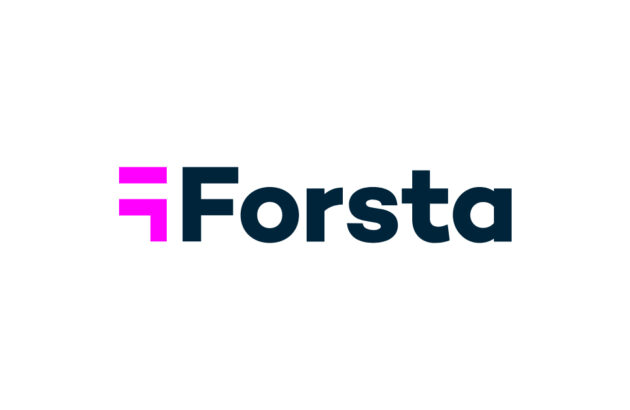What is Voice of the Employee?

They say it’s all about the customer. But is it really? What about employees? Gathering the Voice of the Customer is vital for any organization, but the Voice of the Employee gives an equally important viewpoint. Understanding how your staff feels about your company can give you deep insights on what works and what doesn’t, what could be easily fixed and what could make life easier for them and for your customers. That’s the human experience. And that’s what we’re here to help you do.
Definition of voice of employee
Voice of the Employee (VoE) is the process of gathering feedback from employees about how they feel about working for your organization, including comments, complaints, and recommendations for improvement.
Voice of the Employee is often made up of long surveys sent out once or twice a year, and shorter, “pulse” surveys that gather quick views about specific topics, for example after an acquisition.
VoE often includes employees’ views on how to improve customer experience as well. After all, no one knows better than employees what processes could be fixed, or what channel could be optimized, for the benefit of customers.
Importance of voice of employee
So why bother? Through the Voice of the Employee, you can:
- boost employee experience (EX) and retention
- lift productivity
- spot and fix issues
- enrich corporate culture
- enhance inclusion and diversity
- bust silos
- inspire communication across departments
Employees often hold the keys to improvements that could really make a difference to your organization and put you ahead of the competition. Improvements that include quick wins, like adding a couple of questions to your online FAQs to cut out hundreds of inbound calls, or more strategic ones, like putting together a chat function to enable agents to handle more than one query at a time. These examples focus on call centers, but VoE really has the power to influence decision making across all departments.
Voice of the Employee is also about making employees happier. After all, staff churn costs companies millions, and finding a way to curb it can set you apart as an employer. Keeping an ear to the grindstone is key to doing just that and will help you spot issues that lead you to lose staff, or worse, keep unhappy, disengaged employees who stay for all the wrong reasons. By collecting feedback throughout the employee journey, leaders are able to do the right things, to fix what needs fixing, to make life easier and better for their staff, which in turn boosts productivity for the organizations. VoE is a real win-win when done right, when it leads to real action and real change.
Voice of Employee stages
Wonder how you get started? Just start sending surveys? Definitely not! Key to the success of a VoE program is building it right and following the right process. At Forsta we suggest the following 5 stages to make sure you get your bases covered.
- Define goals
Most programs should have this step as #1. Makes sense, right? How can you build anything if you don’t know the end goal? If you can’t peek over to the finish line? VoE programs are no different. So, what kind of goals are we talking about here? Well, they need to be SMART: specific, measurable, achievable, relevant and timely. The acronym of all great business goals. That means you can’t get away with generic objectives like “happier employees”. You need statements like “reduce employee churn by 5% before the end of the year”. And they need to be aligned with your executive team’s objectives too, so you can get their support along the way. - Create program
Now we can get our surveys on the road… Just make sure they’re the right surveys. Historically, companies relied on annual surveys, with dozens of questions. [If that’s still what you do, read on!]. These surveys were hated by employees, and useless when it came to stopping them leaving. By the time results were analyzed and insights were extracted, they were no longer relevant, and you’d already lost staff or made them even more annoyed/disengaged/angry (tick all that apply). Thank goodness those days are over. Periodic surveys are still useful, if engaging and not too long, but you need to add to the mix pulse surveys and other methods that give you the power to listen to your employees, nonstop. - Collect feedback
The collection itself is the easy part once you’ve created the program. Like all feedback programs, make it omnichannel. Meet your employees where they are, and when it’s convenient for them to engage with you. And give them the right tools, apps, surroundings… What matters here is to give them space to be themselves, to be direct, to be honest. They need to feel that sharing their opinions is safe and that they’re protected. So, make sure you safeguard their identity when needed. And when you use a more direct communication method, like one-to-one meetings, take the time to explain how you intend to use their feedback. Don’t miss the opportunity to get their ideas along the way, through crowdsourcing or similar methods. - Analyze data
Although it’s great to use all these different channels, it tends to make the analysis a bit trickier. That’s why spending time to nail Stage 1 and 2 is so important. You need to know from the start what you’re going to do with the data you collect. Too many programs try to figure this out once they start collecting, but it’s much harder then. Who needs to know what, how are they going to receive/view the information, how does the feedback correlate to the employee journey. Live dashboards, push alerts and notifications, in-depth reports – all this needs to be set up at the start of your program (and adjusted along the way if needs be). - Act on insights
Last but definitely not least! What are you going to do with all this data, all the insights you’ve gathered along the way? This last stage links the previous one with the first one… OK, that’s not clear. The “Act” stage links the “Analysis” stage with the definition of your “Goals”. This is your chance to re-visit these goals and make sure that whatever actions you choose to take will get you to your goals. Say you’ve uncovered the reasons your staff are unhappy and leave. The verbatims will tell you what you need to do to move the needle in the right direction, how you can keep your best staff. Wasn’t that one of your original key goals [not, maybe it should be]?
Voice of Employee examples
Here are some examples about how you can use the Voice of the Employee to cultivate engagement in your organization and watch it blossom.
- Surveys
Clearly the #1 method of gathering feedback. Ask and you shall receive! Surveys give you structured responses and verbatims for context. They’re easy to analyze so you get insights quickly and you can act on them efficiently. - 360-degree appraisals
Why get one viewpoint when you can get a constellation of them? 360° appraisals are a great tool to dig deeper into employee performance and promote cross-departmental engagement in the workplace. - One-to-one evaluations
Meetings between employer and employee are rarely on top of people’s most favorite work moments. But they are a critical part of satisfaction (or lack thereof) at work. Listening, and being listened to – that’s great! But finding a way to record all this consistently across the organization, that’s even better. - Focus groups
Well known in the consumer world, focus groups can be just as powerful in an employee setting. Use them to drill down into employee surveys, to discuss an upcoming company-wide initiative, to find solutions to issues you’ve uncovered or discover new problems. - Crowdsourcing
Unleash the power of your employees to foster a culture of innovation across your organization. Empower them to become part of the creative process, where and when it suits them. Manage multitudes of ideas in a single place and ensure they don’t stay in a box but keep contributing to your company’s success.
How can Forsta help?
So how can we help you succeed with VoE? Forsta gives you the technology and expertise to gather employee feedback and to turn it into valuable insights. All this to point you straight to the actions you need to take to lower churn, foster engagement and boost innovation.
Forsta stays with you every step of the way. We work with you to understand the employee journey and what matters the most to them and to your organization. You get to choose how to engage with staff and through what channels. You get to socialize the right insights with the right people, in a way that helps them do something about them. And you get to prove your program is working by showing how it’s delivering results and ROI.
So why wait? Contact us today to set up a demo.
Conclusion
We’ve seen how the Voice of the Employee can help your business. In the same way that Voice of the Customer creates positive customer experiences, VoE has the power to boost engagement throughout the organization.
But only if you do it right.
Only if you define the right goals and keep them in your line of sight the whole time.
Only if you set up the right listening posts, at the right steps in the employee journey.
Only if you make sure people can act on employee insights…
… and create a better world at work!
Related stories
Research HX
Many feedback programs measure Net Promoter Score movements, but few can reveal the “why” of customer behavior. Forsta’s HX Benchmarks puts performance in context so you can understand what great experiences look like for your customers. Learn more about the human-centered intelligence you need to outperform the market.

AI and the new era of customer experience: Insights for 2025 and beyond
AI and the new era of customer experience: Insights for 2025 and beyond Webinar synopsis: In today’s fast-paced digital landscape, customer experience (CX) is the ultimate differentiator—and AI is rewriting the playbook for how businesses connect with their customers. Tune in to an engaging session that blends cutting-edge thought leadership with actionable strategies to elevate […]

Integration: the new frontier of insights for research HX
Integration: the new frontier of insights for research HX Webinar synopsis: Discover the faster, smarter and more accurate way to research with Research HX. Gone are the days of sequential processes skipping between platforms. Parallel workflows, integrated steps and AI enhancements to the tools you use daily. Related resources

Learn more about our industry leading platform
FORSTA NEWSLETTER
Get industry insights that matter,
delivered direct to your inbox
We collect this information to send you free content, offers, and product updates. Visit our recently updated privacy policy for details on how we protect and manage your submitted data.